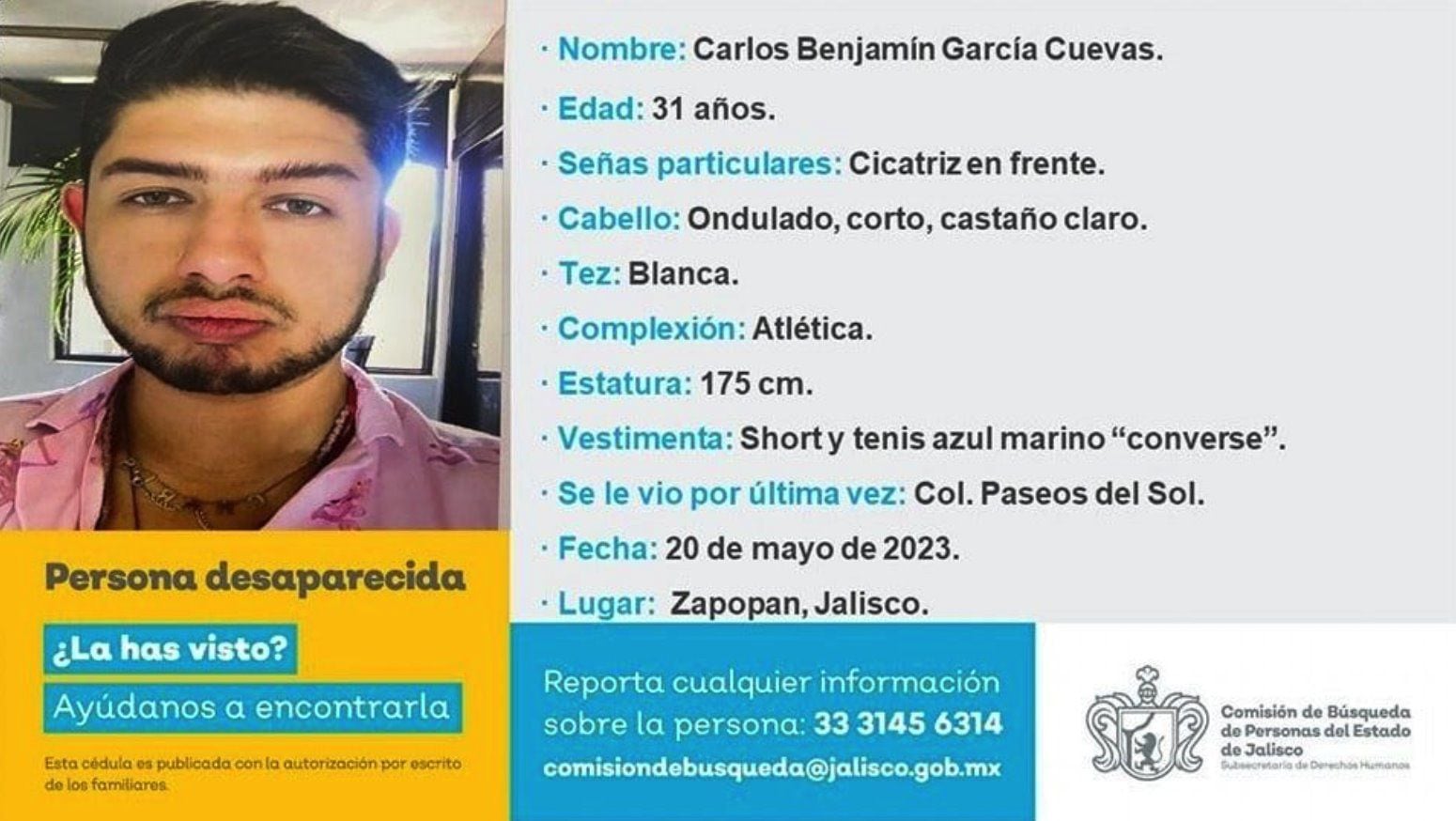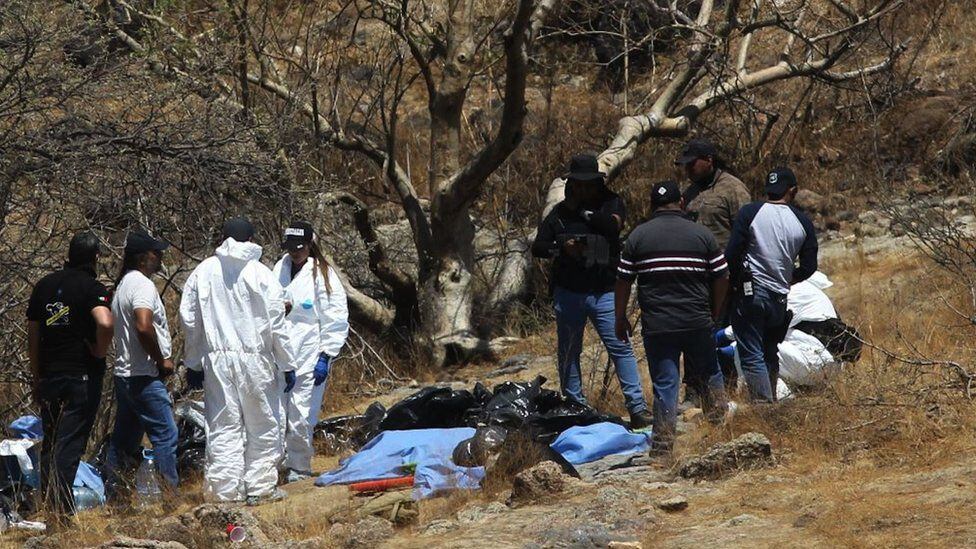The little hope that the relatives of eight people disappeared in the Mexican state of Jalisco had of finding them alive was completely diluted this Tuesday.
The forensic tests concluded that the human remains found in 45 bags on May 31 in a ravine on the outskirts of the city of Guadalajara correspond to the young people.
LOOK: Emma Coronel: the wife of ‘El Chapo’ Guzmán leaves prison in the United States
The news could have gone almost unnoticed in a country unfortunately bled dry by the at least 110,000 disappearances that its official records reflect. However, this case attracted attention from the beginning for several reasons.
The first, the fact that the disappearances became known in a staggered manner in a short space of time. The second, that they were all work colleagues in a call center in the municipality of Zapopan.
And it is his occupation in this telephone service space that focuses the investigations to try to clarify what happened.
The main hypothesis of the authorities points to the fact that elderly foreign citizens were allegedly defrauded from the premises through telephone calls for the fraudulent sale of tourist apartments.
The benefits they obtained served as source of funding for some organized crime group, with special suspicions towards the Jalisco Nueva Generación cartel (CJNG).
Some parents of the young, however, They claimed not to know anything about these alleged illegal activities and they asked the authorities not to criminalize their children beforehand, who told them that they were selling vacation packages to tourists.
the eight workers
The investigation began when on May 20 he disappeared Carlos Benjamin Garcia, 31 years old. Her mother told the newspaper El Heraldo de México that that day was the last time she spoke to him on the phone while she was preparing to go to the laundry.
Not being able to communicate again since then, he tried to talk to Itzel Abigail Valladolid, a friend and colleague of his son, to ask if he knew of his whereabouts. But he didn’t manage to talk to her either.
It was then that he decided to call the young woman’s mother, who to his surprise confirmed that both her 27-year-old daughter and charles davidanother of his 23-year-old sons, had also been missing since May 22.
That day was also the last in which they were seen Jesus Alfredo Salazar and Arturo Robles, 37 and 30 years old; Mayra Karina Velazquez, 29 years old; and Jorge Miguel Moreno, 28; whose disappearances were reported to the authorities on successive days.
As early as June 1, the State Prosecutor’s Office learned of the disappearance of Juan Antonio Estrada, 34 years old. The man also disappeared on May 22 when he was going to work and it was considered that he could be related to the same case.

When the authorities verified the common link between all of them, they went to search the establishment where they worked.
The Jalisco Prosecutor’s Office reported that inside they found marijuana, a piece of cloth and a mop with “reddish stains”. Blackboards were also found with the names of foreigners, “membership notes or timeshares, and economic goals to be achieved.”
He also declared that the premises did not have a license for any type of activity. The Prosecutor’s Office also announced that the tenant of the property is being sought, although so far No arrests were reported in this case.
A second place with similar characteristics was later registered as the supposed operations center of the same company, where machines for counting money and “annotations of predesigned dialogues in English to make phone calls to foreigners” were identified.
“Shared time”
While the search for the young people continued, official information about the alleged activities in which they were engaged arrived with droppers.
On May 29, the governor of Jalisco, Enrique Alfarorecognized that the case was “much more complex than it seemed” and ruled out that it was a call center but of “an operations center of another nature”.

But in a statement, the state government went further and revealed what is considered the main line of investigation: that the case could be linked to companies that carry out scams targeting older Americans through the sale of “timeshares” (tourist accommodations to be used during a period of each year) on the coast of Jalisco.
State authorities pointed to the possible relationship with the companies that were identified at the end of April in a report published by the United States. In it, the Treasury Department exposed a business network in Jalisco connected to the Jalisco Nueva Generación cartel and dedicated to telephone scams as a source of financing for the criminal group.
According to the report, a cell established in the tourist municipality of Puerto Vallarta would be specialized in deceiving older Americans, making them believe that they were buying or renting houses for their vacations in Mexico.

One day after this hypothesis was known, the Mexican Secretary of Security, Rosa Icela, was questioned about the case in the president’s daily conference and confirmed that it would be “people who were carrying out some type of real estate fraud and some type of telephone extortion.”
CJNG hypothesis
Asked if the CJNG would be involved in the case, Icela avoided pointing to a specific authorship. “We are looking at which group it corresponds to. I can’t tell you that until we have evidence from the investigation,” she replied.
Until now, no authority has officially pointed to the cartel led by El Mencho. The Jalisco governor limited himself to saying that this is a matter “which is evidently involves organized crime,” Therefore, communication is maintained both with the federal government and with US authorities.

The uncertainties about why the eight young people disappeared remain many, almost as many as the hypotheses. Sources from the Mural outlet, from Grupo Reforma, assured that the case could have been a retaliation from the CJNG, considering that their frauds would have been exposed in the US report. thanks to information from call center from Zapopan.
According to US officials consulates for the Milenio newspaper, however, the young people could have disappeared because they tried to stop working for the company. With this, the cartel would like to be sending a warning message to other people who collaborate with them in timeshare fraud schemes.
Among all these investigations and hypotheses, the relatives of the young people clung to the hope that they would continue to live and held protests and sit-ins to demand greater involvement from the authorities in their search.
When on May 31 they located 45 bags with human remains on the outskirts of Guadalajara, the Prosecutor’s Office reported that some of the remains coincided in physical characteristics with those of the disappeared youth.

However, it was necessary to wait for the studies of the Forensic Institute to confirm his identity, which ended up happening this Tuesday after more than two weeks of anguish.
Now, the relatives demand that responsibilities be purged and find those who ended the lives of their children in a country where more than 90% of reported cases remain in impunity.
Source: Elcomercio
I am Jack Morton and I work in 24 News Recorder. I mostly cover world news and I have also authored 24 news recorder. I find this work highly interesting and it allows me to keep up with current events happening around the world.

:quality(75)/cloudfront-us-east-1.images.arcpublishing.com/elcomercio/WNEQM2YF7BA5ZO5FWKG5QT2VDE.jpg)

:quality(75)/cloudfront-us-east-1.images.arcpublishing.com/elcomercio/XK4KIZ6EGZF6PPFSX2QOEY4OBY.jpg)
:quality(75)/cloudfront-us-east-1.images.arcpublishing.com/elcomercio/A5XZCPO2FVH3VJKYQCGLK6TL4E.png)
:quality(75)/cloudfront-us-east-1.images.arcpublishing.com/elcomercio/QHZC6PNJU5AURGNKPZOZ6Y6XT4.jpg)
:quality(75)/cloudfront-us-east-1.images.arcpublishing.com/elcomercio/CEDFMU7CYRDJLHZKMA54UXWEYE.jpg)
